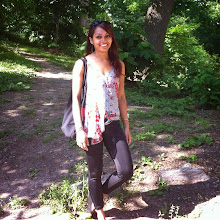Response
to Globe and Mail Article, “Why you should eat in Parc-Ex, Montreal's
ungentrified ethnic food paradise” by Adam Leith Gollner
Countering the Colonial Gaze and Gentrification
Written by: Vanessa Shanti Fernando, Sidara Ahmad, Nailasada Alidina, Nadia Sheikh and Farha Najah Hussain
Following
in the footsteps of a long tradition of predatory colonialist writing,
food critic Adam Leith Gollner writes on an “ungentrified food
paradise”,
reducing
a complex area in Montreal (Globe and Mail, April 2nd). As he writes,
Parc-Ex is not a neighbourhood but a “habitat” and those that frequent a
given restaurant are not customers
but “wildlife”. Gollner goes beyond offering insight into Parc-Ex’s gastronomical landscape; rather, he echoes
colonialist tropes in presenting this neighbourhood and its inhabitants as commodities.
Amongst
the transphobic and sexist observations he makes are that of a
“sixty-something transsexual with a cubist face” and a “woman with
Cleopatra eyes”. For those of us yearning
for a description of people that extends beyond the superficial, he goes
out of his way to provide us the insightful observation that the
“transsexual” has “painted fingernails and long, blond, Pantene-perfect
hair”. Gollner chooses a dehumanizing narrative,
rather than identifying the people he observes as three dimensional
human beings with aspirations. He commodifies Parc-Ex’s residents by
presenting them as sensationalized Others. For Gollner, Parc-Ex is the
home of “cultural communities” and “new arrivals”
who run “weird driving schools”, sell “exoticisms”, and give the
impression of living “on an altogether different planet”. In contrast,
the “creative class” of “encroaching bohemians”, who live in the Mile
End and elsewhere, are granted full humanity: they
are “[a]rtists, activists, documentary filmmakers, and musicians”.
Gollner places us in their vintage wingtip shoes by explaining the rise
of real estate prices and interviewing people who are thinking about
moving to or opening boutiques in the neighbourhood.
Why aren’t Parc-Ex’s residents granted the same nuanced portrayal?
Instead, Gollner brushes aside residents’ discomfort with “gentry”
outsiders and encourages readers to venture into this mysterious place,
to uncover this “hidden gem” and enjoy a “pre-gentrified
frontier”.
Furthermore,
in attempting to “other” the residents of this area, Gollner wistfully
remarks that Parc-Ex is “raw, gritty, almost un-capitalist”. Except that
this neighbourhood
is not un-capitalist in the slightest. Life in Parc-Extension is deeply
embedded within, and affected by, a capitalist system that pushes
racialized communities to the margins and forces them to face layers of
systemic and state violence – including poverty,
racial profiling and police violence by the SPVM, and the brutality of
Canadian Border Service Agents (CBSA). To qualify this area as
“un-capitalist” only adds insult to injury with respect to the harsh
realities people face.
We
question why the article’s headline quickly changed from its original
title, “Montreal’s Park Ex, an edgy hidden gem ripe for gentrification”?
Was the original title too
blunt about the piece’s ideological positioning? For Gollner, Parc-Ex is
“a candidate for gentrification” because of its “cheap rents and
central location”. Because Parc-Ex has “always been a landing spot for
new arrivals”, Gollner frames increased gentrification
as simply “a significant new wave”. His failure to understand the
process and impact of gentrification, and ultimately support it by
stating that it happens in the “best of places,” is promoting an act of
systemic aggression.
Gentrification
is a dynamic and violent economic process in which inhabitants of poor
and working class neighborhoods are displaced from their homes and
neighborhoods. This
is primarily due to the fact that developers – with support of municipal
politicians and governments as is the case with Parc-Extension - seek
profit from relatively cheap property by constructing or converting
real-estate in that area (e.g condominiums).
Gollner’s call-out to hipsters and others outside of Parc-Ex is not a harmless rallying cry. Gentrification
is a very real process in Parc-Extension, as can be seen by le Projet d'aménagement d'un nouveau campus universitaire sur le site de la gare de triage d'Outremont.
As
stated in the “Rapport de consultation publique (2007)” by the Office
de Consultation Publique de Montreal, the plan is to construct student
residents, teaching and research buildings
for l'Université de Montréal. A private development of 800 units will be built, in which only 30% will be
for social housing. As
Fred Burrill states in his response to Gollner's piece (Maisonneuve,
April 6) Parc-Ex
is “. . . a neighbourhood where almost 20 percent of the population pays
50 percent of its monthly income in rent, and where 81 percent of the
total population are tenants, facing a high risk of displacement with
the encroachment of condo projects and university
residences”. The displacement that Parc-Ex residents face is very real, and no laughing matter.
Gollner's
piece on food is no a harmless folly. It is one that is embroiled in
racist ideology and at the very least ignores the pernicious impacts of
gentrification on human
beings.
As
individuals who are committed to the communities within which we
organise, and from which we draw inspiration in our quest for social
justice, we acknowledge with great humility
the creativity, strength and determination of communities and
neighbourhoods who have and continue to fight against racism and
gentrification.
The authors are part of the South Asian Youth (SAY) collective, in Montreal occupied Kanienkehaka (Mohawk) Territory.
